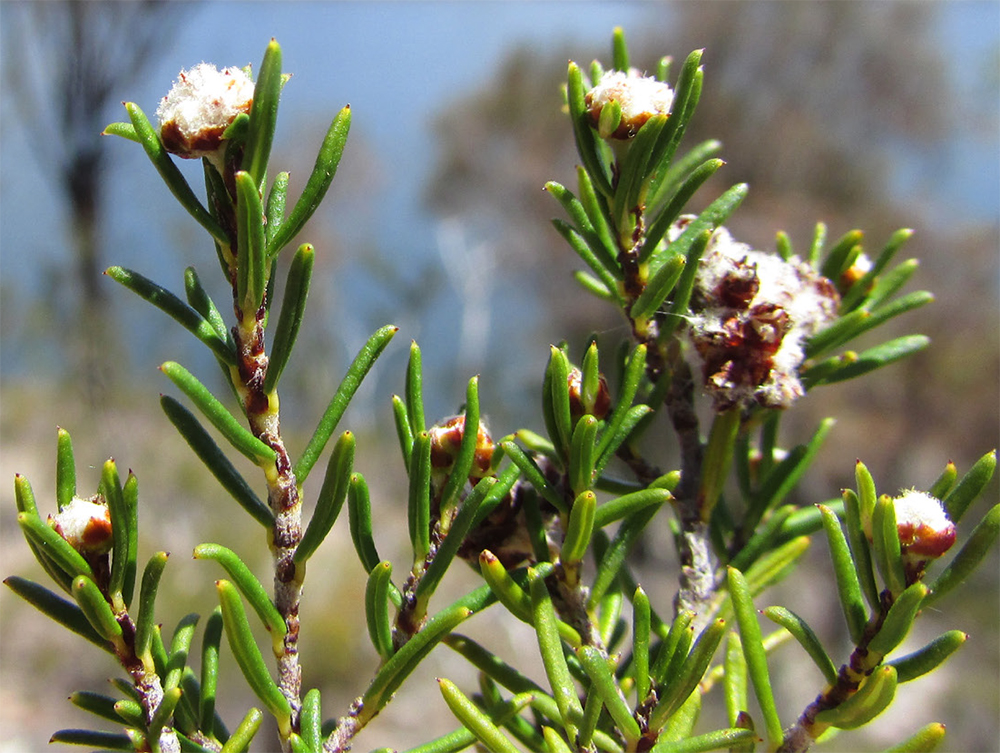Today, 20 May 2022, the State Herbarium of South Australia published four research papers in Vol. 36 of its journal Swainsona online.
(1) R.W. Davis & T.A. Hammer, Swainsona picta (Fabaceae), a new species from the Yalgoo bioregion, Western Australia (0.7 mb PDF).
The authors describe a new species of Swainsona with a particularly striking fruit. It only occurs near and on the Karara mining tenancy in the Yalgoo bioregion of Western Australia and is most closely related to S. oroboides.
(2) J. Kellermann, C. Clowes & S.J.A. Bell, A review of the Spyridium eriocephalum complex (Rhamnaceae: Pomaderreae) (7.5 mb PDF).
This and the next two papers present some of the taxonomic consequences of the recently published first comprehensive phylogeny of the genus Spyridium by Melbourne University PhD student Cat Clowes and collaborators (Clowes et al., Australian Systematic Botany 35: 95-119, 2022).
The authors revise the well-known widespread Spyridium eriocephalum and related species. The Kangaroo Island endemic var. glabrisepalum is raised to specific rank, and two new species are published: Spyridium latifolium from the Fleurieu Peninsula (S.A.) and S. undulifolium from the Goulburn River area (N.S.W.). Another taxon from New South Wales is given a phrase name, as it is only known by 3 specimens and has not been collected for 40 years: Spyridium sp. Dingo Creek (T. Tame 1011).
(3) J. Kellermann, C. Clowes & W.R. Barker, Spyridium bracteatum, a new species from Kangaroo Island allied to S. thymifolium (Rhamnaceae: Pomaderreae) (2.9 mb PDF).
The authors publish a new species from Kangaroo Island, known for over 30 years, but as yet unnamed. It has in the past been confused with S. thymifolium (which is also described and illustrated in the paper) and other species.
(4) J. Kellermann & C. Clowes, Spyridium longicor, a new species from Western Australia (Rhamnaceae: Pomaderreae) (2.7 mb PDF).
A new Western Australian species is described that was so far, known under the phrase name Spyridium sp. Jerdacuttup. It occurs from near Gairdner and Jerramungup townships, in Fitzgerald River National Park and eastwards to Bandalup Hill, Cheadanup Nature Reserve, Wittenoom Hills and with easternmost populations near Condingup.
To access content of all volumes of Swainsona and the Journal of the Adelaide Botanic Gardens since Vol. 1 (1976), please visit the journal’s web-site at flora.sa.gov.au/swainsona or the Swainsona back-up site.












You must be logged in to post a comment.